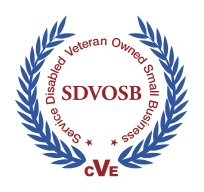San Antonio
San Antonio Digital Forensics : LCG Discovery Experts
Address:
306 Morton St. Richmond, TX 77469Latest Blog in The eDiscovery Zone
AI with Integrity – Part 7: The Final Takeaway, AI Without Integrity Is Litigation Waiting
Series context. This concludes the seven-part AI with Integrity series, focused on building defensible, measurable, and transparent AI systems that withstand courtroom scrutiny and enterprise risk audits. [1]
The Litigation Risk Hiding Inside AI
Artificial intelligence is transforming how investigations, compliance reviews, operational oversight, and digital evidence processing are performed. But as organizations accelerate deployment, a pattern is emerging in courts, enforcement actions, and regulatory guidance: AI that cannot demonstrate integrity is not an asset. It is a liability.
Judges, regulators, and opposing experts are no longer impressed by efficiency alone. They are asking how outputs were generated, validated, audited for bias, logged, preserved, and supervised. These demands reflect established rules and standards, including Federal Rules of Evidence 702 on expert admissibility [2], Sedona Conference principles on transparency and process validation [3], and ISO and NIST frameworks that require traceability, data quality controls, and lifecycle governance. [4]
When AI-generated content is used as evidence, or when decisions informed by AI face legal challenge, the question is not whether the model performed well. The question is whether the results are provably trustworthy.
The Mindset Shift: Part 3 Run, Hide, Fight – What They Do Not Teach You
Series context. This installment builds on Part 1 (Participate in Your Own Rescue) and Part 2 (Time and Distance), which established that individuals own the first minutes of any crisis. Part 3 explains how to apply the Run, Hide, Fight model in real-world contexts and for practical decision-making.
The model works only when it is trained, understood, and applied with context.
The Run, Hide, Fight model is widely promoted in federal guidance and private-sector safety programs, yet most people have never practiced it under real stress. Posters, videos, and annual briefings create familiarity, but not capability. As Parts 1 and 2 emphasized, critical incidents often end before responders arrive, and survival depends on immediate civilian action within the first few minutes.
Federal guidance from the Department of Homeland Security (DHS), the Federal Emergency Management Agency (FEMA), and the Cybersecurity & Infrastructure Security Agency (CISA) reinforces the same principle. People survive when they move early, reduce exposure, and make rapid decisions that increase their time and distance from the threat.
Beyond the Screen, Part 7: Forensic Readiness for the AI Era
Series context. In this final installment of the series, we expand on the earlier analysis of metadata, audio, video, and machine-generated artifacts by emphasizing organizational readiness. Modern investigations increasingly involve AI-generated content, synthetic media, and rapidly changing cryptographic challenges, which necessitate a shift from reactive forensics to proactive preparedness. [1]
The New Frontier of Evidence
Artificial intelligence is now generating audio, video, images, documents, and entire digital interactions that mimic human behavior convincingly enough to deceive casual observers and untrained analysts. The implications for litigation are immediate. Courts continue to rely on the foundational standards for authentication under Federal Rule of Evidence 901, supported by companion rules on self-authenticating electronic records. Yet AI-driven manipulation is expanding faster than traditional evidentiary safeguards can keep pace. [2][3]






